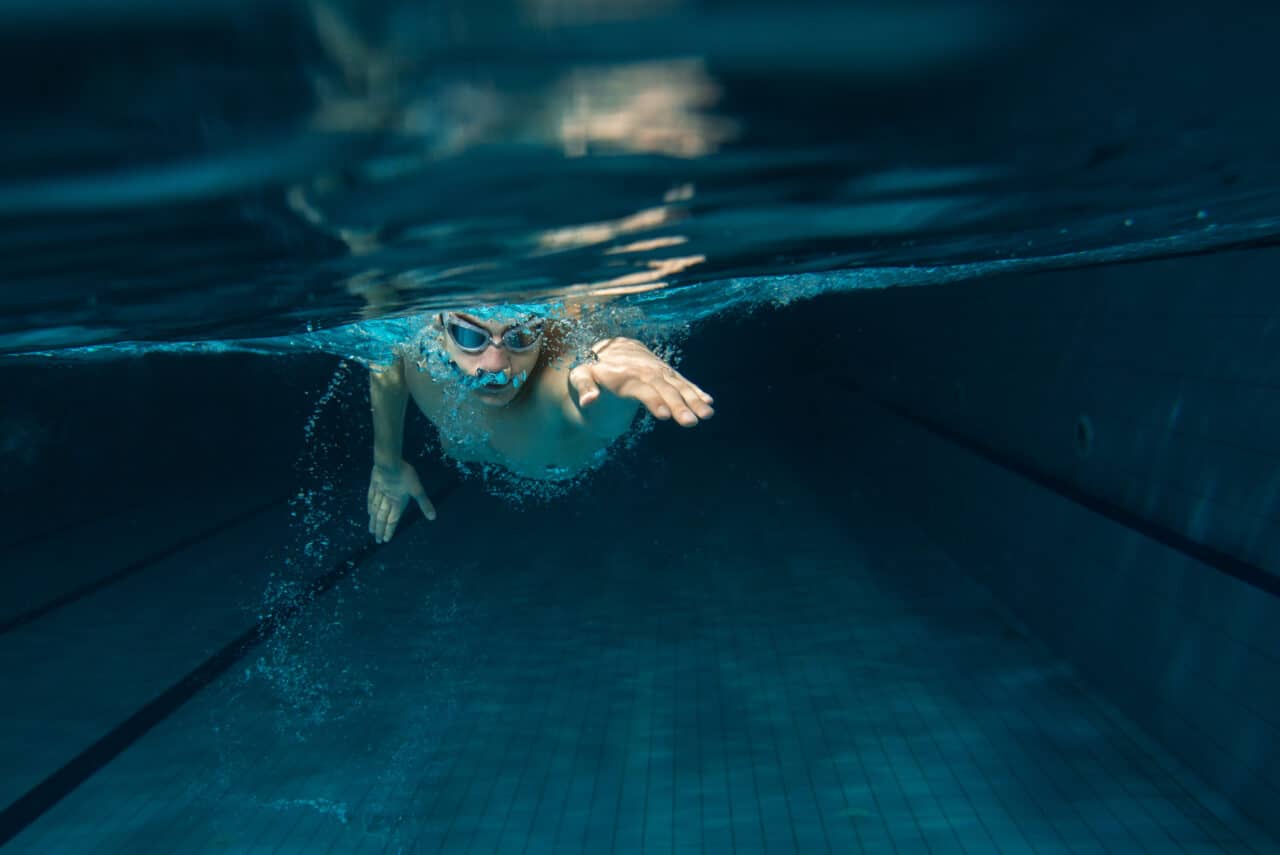
Swimming and strength training – how to get stronger and increase stamina
Swimming and strength training are two of the most effective forms of physical exercise. But what happens if you combine these two sports? Are they a perfect pairing, or is it better to stick with just one? Here, we explain whether you can incorporate both types of sport into your routine and how to do so, and discuss some of the pros and cons. And if you are keen to start straight away, we have some studios ready for you!
Is it possible to combine swimming and strength training?
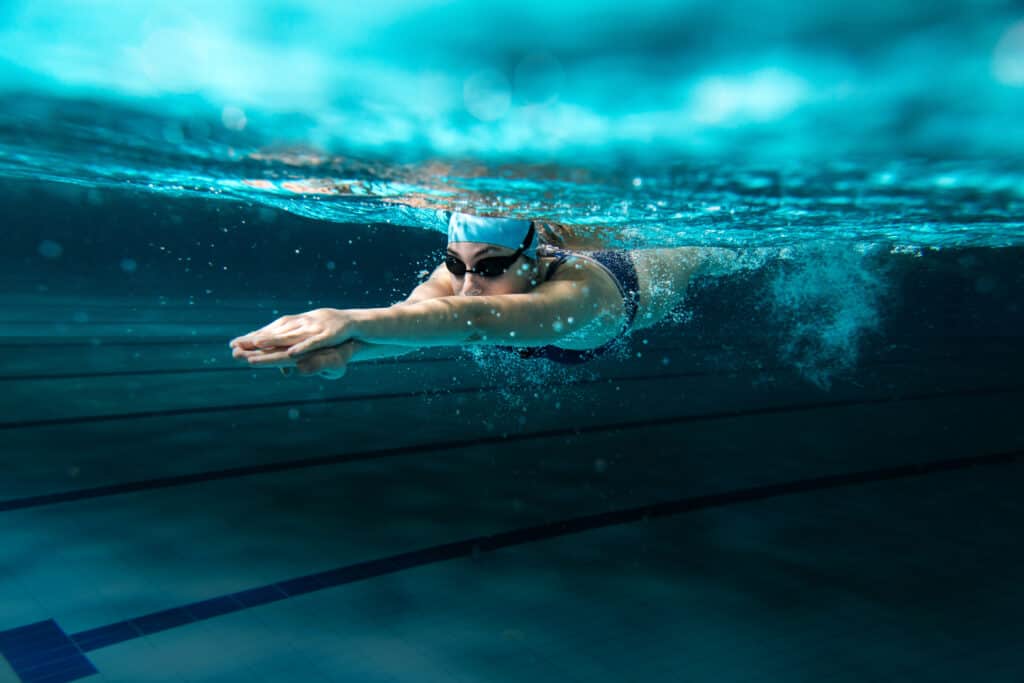
Of course! By combining these activities, you can even improve performance in your favorite sport. Swimming generally reduces your heart rate, which supports regeneration after strength training. In turn, targeted strength training increases your core stability and leg strength, which can have a positive effect on your swimming performance.
What should you be aware of?
The combination can be an effective method to improve your physical fitness and health. However, there are some important points you should bear in mind:
- Planning: Make sure you plan enough time for both activities and that you give your body enough time to recover.
- Warming up: Warm up before strength training to prepare your muscles for the strain and reduce risk of injury. When swimming, you can warm up by doing a few laps at a lower intensity.
- Training intensity: Make sure you choose the right intensity for both type of sports to avoid overload or injury. For example, you can do some difficult strength training on one day and then a restful swimming session on the next day.
- Combination of exercises: You can choose strength exercises that are especially relevant for swimmers, for example exercises for the shoulders and back.
- Regeneration: Plan enough time for recovery after the workout.
- Individuality: Each body is different, so adapt your training sessions to your individual needs and your body. If you feel pain or signs that you are overdoing it, take a break.

Possible advantages
- Improved stamina and strength
- Swimming is gentle on the joints
- More effective muscle strengthening while swimming thanks to targeted strength training
Possible disadvantages
- Time needed to adjust to the combination and fatigue if changing too quickly
- Challenges when creating an effective training routine
- Risk of injury if implemented incorrectly
Swimming and strength training on the same day – does it work?
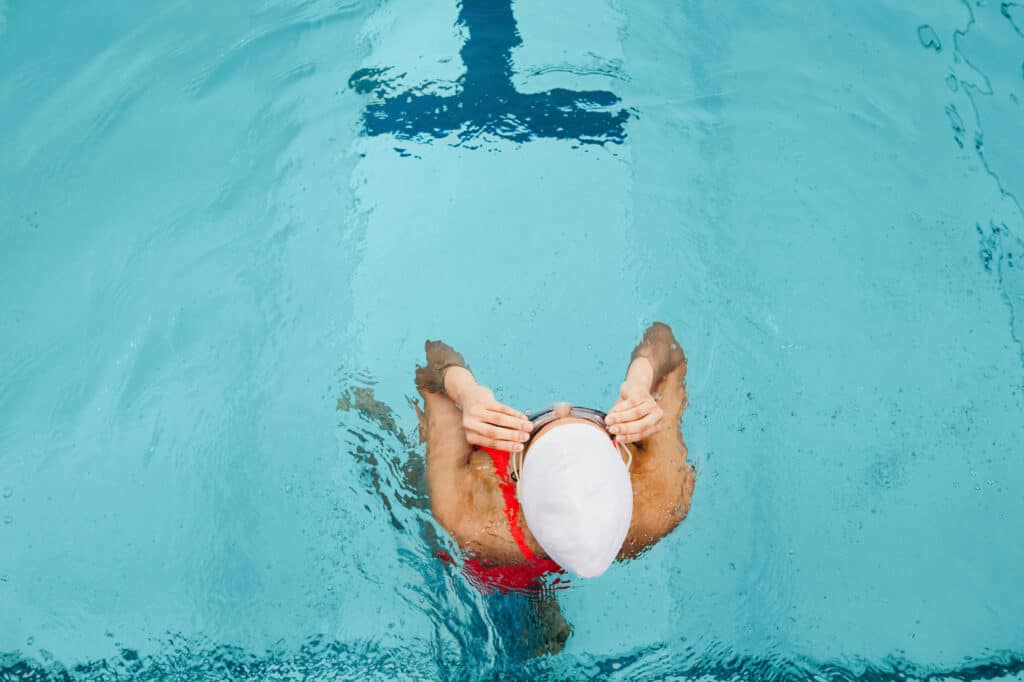
In short, it’s generally possible to swim and do strength training on the same day. If you do decide to do it, you should be aware that both training types are a physical strain and your body therefore needs a longer recovery time. Also, if you want to do both on the same day, consider the order you do them in. A break of several hours between training sessions, for example, can help you to avoid fatigue and injury. It’s also really important to pay attention to your sleep, food intake and relaxation, so you can optimize your recovery.
Swimming before or after strength training?
There is no definitive answer to whether it’s better to swim before or after strength training, because individual differences in training goals, capacity and physical fitness must be taken into account. What is clear is that it is a great combination, because the sports target different muscle groups and therefore enable a balanced, whole-body training. However, it’s always important to leave enough time between the training sessions to avoid fatigue and injury. Also consider whether you want to focus more on strength training or swimming, so you can avoid putting too much emphasis on one or the other when coming up with your own training routine. To optimize your training, you should also adapt your exercises, as well as their intensity and scope, to your individual training plan. Below we will cover some of the most significant impacts of swimming before and after strength training.
Swimming after strength training
- Advantage: It can help to relax your muscles, improve blood flow, and reduce muscle aches.
- Disadvantage: Swimming directly after strength training can also lead to excess stress of the muscles and slow down recovery.
- Recommendation: If you want to swim after strength training, go slow and pay attention to signs of overload. It’s also important to plan enough time for recovery.
Swimming before strength training
- Advantage: It helps to warm up the muscles and improve flexibility. It also increases heart rate and improves blood flow.
- Disadvantage: It can tire your muscles and therefore impair your performance when training strength.
- Recommendation: If you want to swim before strength training, go slowly and make sure you plan enough time for warming up. Also pay attention to signs of fatigue during your strength training.
What type of strength training goes with swimming?
In general, we recommend seeking advice from a personal trainer. That way, the training plan and intensity can be adjusted to your individual goals and fitness levels.
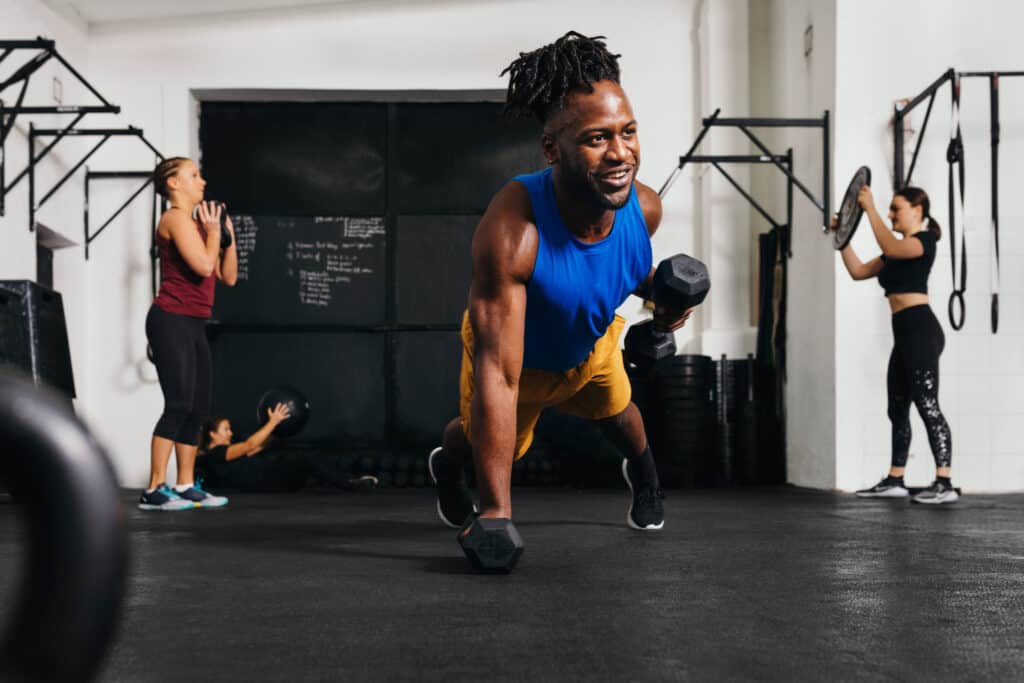
Strength training that’s aimed at the specific needs of swimmers can improve your swimming performance. Examples include exercises to improve your core stability and strength in shoulder and leg muscles.
- Some strength exercises to improve core stability:
- Plank or side plank
- Dead bug
- Superman
- Leg lifts
- Russian twists
- Some strength exercises for shoulder and back muscles
- Bench press / push-ups
- Pull-ups or lat-pull exercises
- Dips
- Shoulder press
- Bent-over row
- Some strength exercises for the lower body
- Squats
- Lunges
- Deadlifts (also trains the core)
- Calf raises
Strength training with high resistance and low repetition can improve high-speed strength and therefore increase swimming performance. You can try some of the above strength exercises, for example squats, with heavier weights. Training which combines swimming and plyometric exercises lends itself well to improving strength for the swim start, push off and swimming speed. Plyometric training is based on powerful, explosive movements. It includes exercises that involve jumping.
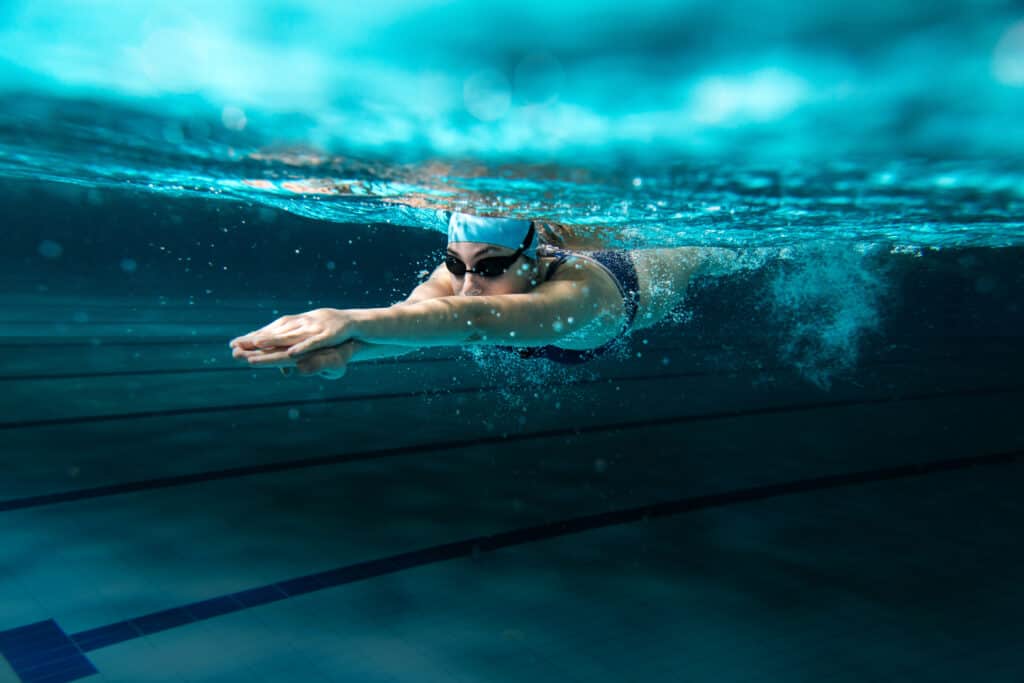
Can swimming replace strength training?
Both trainings have different effects on your body and health, so you shouldn’t consider one to be a replacement for the other. Strength training helps you build muscle and strength, while swimming improves your stamina and cardiovascular health. It is also possible to build muscle mass by swimming alone, but strength training is more effective. By combining both types of sport, you can maximize the benefits of both activities. Practicing both sports can improve your overall fitness, cardiovascular system, and performance.
Some studies have shown that swimming can also help to improve recovery and reduce injuries as a complement to strength training. For older adults the combination can be particularly beneficial for increasing muscle mass and bone density, improving mobility and balance, and maintaining cardiovascular fitness. The two sports can complement each other by targeting different muscle groups, allowing for a balanced training program.
What does a training plan for swimming and strength training look like?
As mentioned above, there is no one training plan that suits each body perfectly. Therefore, it’s best to find a coach who can support you in coming up with a training plan to fit your individual needs and goals. In any case, it’s important to be mindful of a good balance, enough rest time, and a healthy diet. This way, your body will recover better, and you will avoid injuries. An example of an intensive training plan could look like this:
- Monday: strength training (whole body)
- Tuesday: swimming (interval training)
- Wednesday: strength training (upper body)
- Thursday: swimming (long-distance training)
- Friday: strength training (lower body)
- Saturday: swimming (technique)
- Sunday: rest day
You can also increase the intensity and amount of your training over time to ensure continuous progress.
Where can I go swimming and do strength training?
If you are looking for somewhere to combine these sports, it’s a good idea to get a membership at a gym with a swimming pool. Another option is becoming a member of Urban Sports Club. With a membership you are not limited to only one training, but you can also try over 50 types of sport at a variety of locations in your city or in Europe. Find partners for your training in your area.
Do you already have some experience in combining these sports? Tell us more in the comments!



Comments